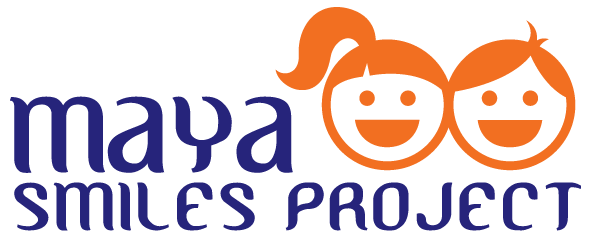Additionally, system failures, such as server downtime or API errors, can disrupt automated processes and result in missed opportunities or financial losses. Regular system maintenance and monitoring are required to mitigate this risk, adding to the complexity of using AI in trading. That said, the effectiveness of AI models also depends heavily on the quality of the data they’re trained on and the reliability of the infrastructure they operate within. Incomplete or biased datasets can lead to flawed analysis and erroneous trading signals.
What’s an AI cryptocurrency?
It supports major exchanges like Binance, KuCoin, and Coinbase and offers features like backtesting, copy trading, and a strategy marketplace. Traders can test strategies in a risk-free environment using paper trading, making it suitable for all experience levels. AI is transforming day trading by offering advantages that human traders struggle to match. It enables automation, quick decision-making, and real-time analysis of data. AI reduces emotional trading errors and provides a competitive edge in the crypto market. Artificial Intelligence has found great use cases across industries, including the cryptocurrency market.
The success of crypto AI agents like Terminal of Truths, which autonomously executed tasks and launched a cryptocurrency, demonstrates how far this intersection has already come in 2024. AI-driven cryptocurrencies face significant challenges such as privacy concerns, data security vulnerabilities, scalability issues, and the need for regulatory compliance across various jurisdictions. Addressing these challenges is crucial for their sustainable development and acceptance. The top AI crypto projects in 2025 include Beldex, iExec RLC, Render, and Ocean Protocol, all of which present unique solutions and significant investment potential.
Predictive Analytics in Market Trends
- AI crypto trading is a way to trade cryptocurrencies using bots powered by Artificial Intelligence.
- These platforms provide market intelligence, real-time data analytics and sentiment analysis to help traders make informed decisions.
- AI tokens can help improve the crypto market’s security, scalability, and user experience while also offering access to AI technology and services in different ecosystems.
- Similarly, the magnificence of AI can be better understood when tools like Midjourney and DALLE-3 exhibit creativity at its finest.
ChainGPT is a sophisticated language model that leverages the power of by deep learning. The model is trained on vast datasets from crypto domains, which allows it to answer relevant questions. GLM, the utility token of the Golem network, serves as the main store of value on the network. The GLM token encourages owners to lease their computing power in return for payments made in GLM by buyers. Numeraire is the protocol behind Numerai, a hedge fund that crowd-sources artificial intelligence to invest in major stock markets worldwide.
Key Considerations and Risks
The convergence of artificial intelligence (AI) with blockchain technology is reshaping the industries through innovations in both fields. Recent crypto project developments implement AI to enhance security and improve data management on blockchain platforms. Conversely, new blockchain networks have been created to facilitate decentralized AI models and applications. One of AI’s most impactful applications in crypto trading is in data analysis. The crypto market generates a vast amount of data from exchanges, social media, news articles, and blockchain networks. AI algorithms, particularly those in machine learning and natural language processing (NLP), are capable of processing and analyzing this data at incredible speed.
These bots make trading easier and more efficient for people by analyzing large amounts of data and adapting to market changes. Bittensor (TAO) is a cryptocurrency project that merges blockchain technology with artificial intelligence (AI). It creates a decentralized network where developers and AI enthusiasts can contribute and access machine learning models. Essentially, Bittensor allows different AI models to interact, learn from each other, and improve over time, which is facilitated by the network’s unique cryptocurrency, TAO. However, it’s a blockchain platform that lets users upload and execute AI models. The project is an open-source and peer-to-peer decentralized platform that seeks democratization through Artificial Intelligence.
If Virtuals Protocol is the stage where AI agents perform, Cookie DAO is the infrastructure that makes the show possible. As the index and data layer for AI agents, it is becoming the backbone of the entire ecosystem. Its recent listing on major exchanges has brought newfound attention to the critical role of data infrastructure in the AI agent economy. Not every trader is a coder, and AI can simplify the technical side of trading by providing coding assistance and educational support. Tools like GitHub Copilot and ChatGPT can generate code snippets, debug trading algorithms, and offer performance improvement suggestions.
While challenges remain, the future of AI in crypto holds significant promise. Automated trading is one of the most widely used applications of AI in crypto. Trading bots powered by machine learning algorithms can execute trades faster and more efficiently than human traders. These bots can operate 24/7, continuously monitoring the market, analyzing patterns, and making trades based on predefined strategies or real-time data. In recent years, cryptocurrency trading has surged in popularity, offering investors opportunities in an emerging asset class. However, this market is notoriously volatile, with rapid price fluctuations driven by factors like technological developments, regulatory changes, and market sentiment.
These agents employ AI to optimize processes across industries such as supply chain management, transportation, and energy. Fetch.ai’s ecosystem facilitates the development, sharing, and monetization of AI services, positioning it as a center for innovation in decentralized AI. Challenges, including the high computational power needed for AI and blockchain, create scalability issues. Solutions like layer-2 technologies are helping, but further advances are required.








Leave A Comment